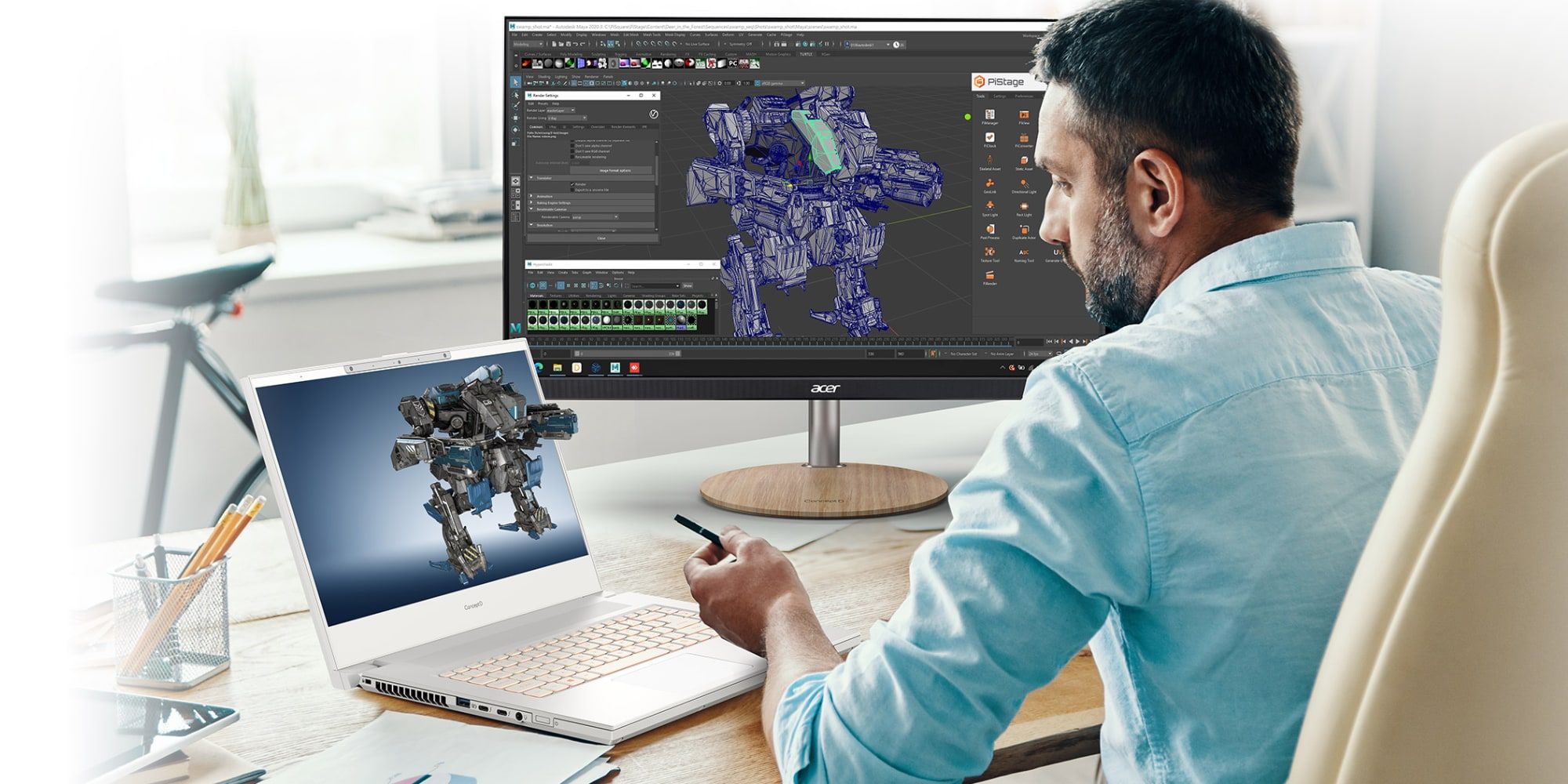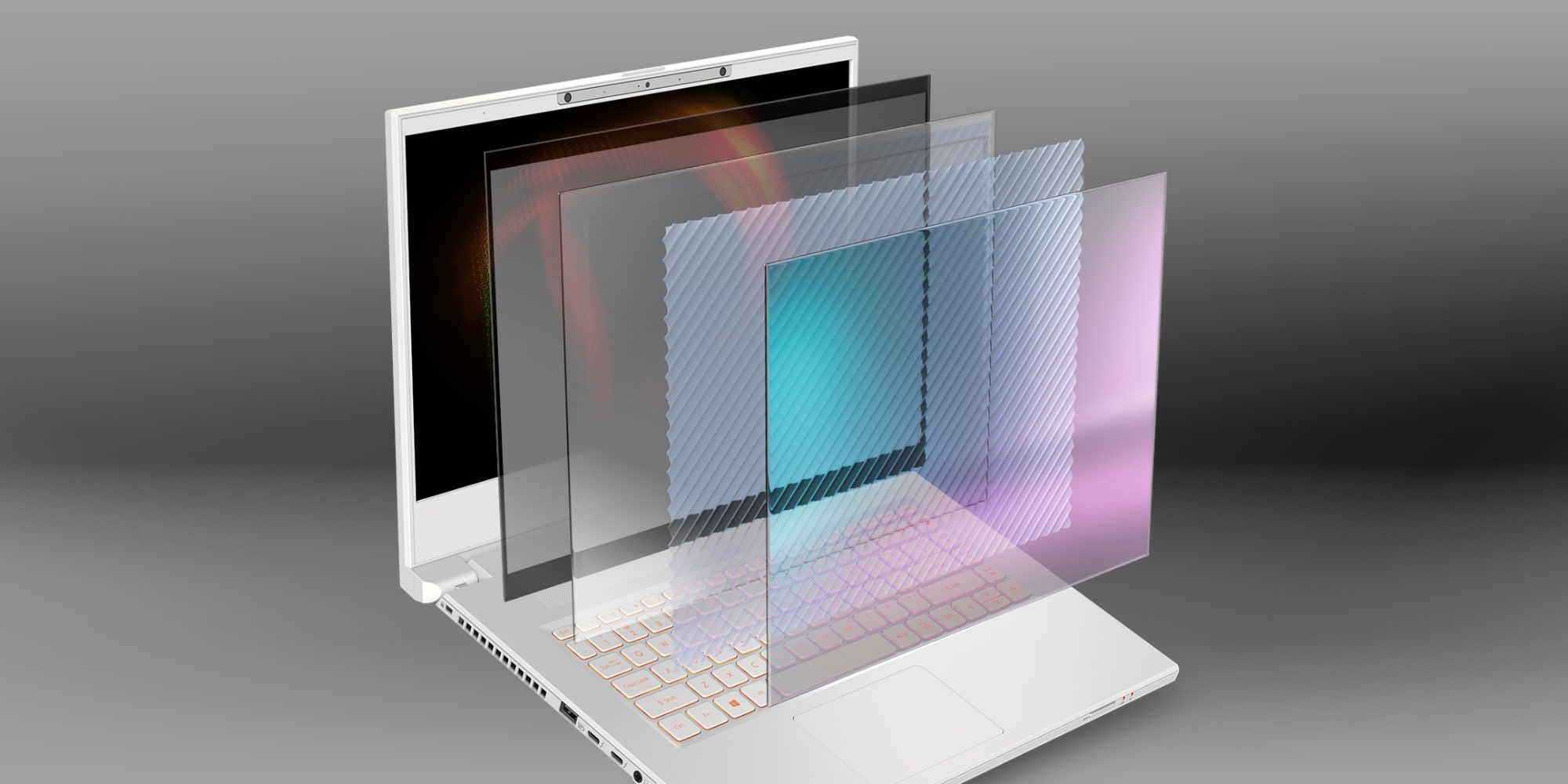Acer's new ConceptD 7 SpatialLabs laptop can float content beyond the screen and doesn't require glasses, using a much more advanced form of a well-known and commonplace 3D technology. As amazing as 3D projection would be for gaming, that is not its primary purpose. In fact, it's best suited to slow-moving or static content. In other words, a tool designed for 3D creators, such as industrial designers, 3D artists that create models for use in films and games, as well as scientists and doctors that might benefit from a stereoscopic view of scanned objects.
Techniques for creating a three-dimensional image on a flat object have been explored for over a hundred years. Among the first with widespread use were the stereoscopes invented in the 1800s. Looking a bit like binoculars and showing a different image to each eye, it simulates the effect of looking at a real-world object. The 1950s saw the rise of 3D movies in theaters, requiring glasses with a blue and a red filter to watch the black and white movie that was shot using a stereoscopic camera with similar filters. The result was a big step back from the stereoscope in terms of quality, but it did open up the experience to a group.
Acer also uses a lenticular layer to create stereoscopic images with its ConceptD 7 SpatialLabs Edition laptop. Lenticular imaging has been used for decades, appearing first in postcards that display a 3D photo or an image that changes with the angle from which it's viewed. 3D TVs and gaming systems, such as the Nintendo 3DS, use this same technique. However, the effect only works within a narrow range and fades or distorts with head movement, causing eye strain. Acer's implementation offers much higher quality, advancing the technology with artificial intelligence and eye-tracking. With any head rotation, the computer adjusts the two images that are simultaneously displayed to compensate for head movement, allowing the viewer to move without losing the 3D effect.
SpatialLabs Laptop Specs & Availability
Driving this advanced display technology requires a substantial amount of computing power and the Acer ConceptD 7 SpatialLabs laptop packs some strong specifications. The maximum configuration will feature an 11th Gen Intel Core i7 processor, an Nvidia GeForce RTX 3080 GPU, 64 gigabytes of memory, and 2 terabytes of high-performance storage. The laptop has a 15.6-inch display with a resolution of 3840 by 2160 pixels dropping to a still respectable 1920 pixels horizontal when using the SpatialLabs mode to view three-dimensional content.
Acer notes that an external monitor can be used in addition to the laptop screen when viewing SpatialLabs content and recommends this combination for the greatest ease of use. This is a powerful laptop with a new type of 3D display, and the price reflects that, starting at 3,599 Euros, which is over $4,100 when converted to US dollars. Speaking of which, Acer's interesting new ConceptD 7 SpatialLabs laptop is due to arrive in the US in 2022, with official pricing and the exact release date having yet to be confirmed.
Source: Acer


